Editor’s Note: CNN Insider Guides are thoroughly checked for accuracy. Given the fluid nature of the travel industry, however, some listings may fall out of date before guides can be updated. The best practice is to confirm current information on official websites before making plans to visit any business or attraction.
Important things happen in Beijing. You can feel this everywhere in the city of nearly 20 million people and the capital of China.
There are the majestic imperial buildings, perfectly preserved in their gold and blood red, sharing the same sidewalk with Soviet masterpieces designed to intimidate.
In the years before and after the Beijing 2008 Olympics, modern wonders of glass and chrome have appeared. It all makes Beijing’s cityscape a study in superlatives; the grand scale of the city planning a campaign for headlines.
And yet, there’s a Beijing that’s growing organically on a human scale, particularly within the narrow hutongs, tiny alleys that separate traditional courtyard homes. Unique restaurants, music venues and boutiques are opening in these fast-gentrifying neighborhoods. You’re never short of options when planning what to do in Beijing.
Shanghai: Insiders share tips on China’s city of the future
This adds up to a city of drama and juxtaposition. Visitors return home with pictures of epic monuments and cute alleyway cats resting with elderly people in faded Mao suits.
Here’s where to start and what to do in Beijing:
Hotels
Luxury
Kerry Hotel
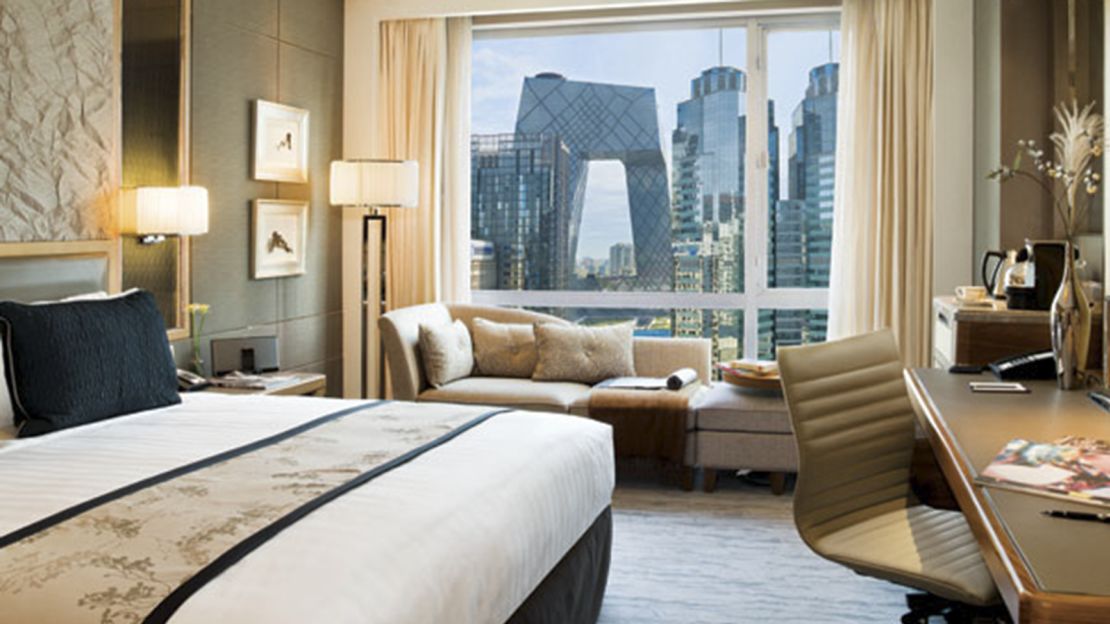
Did we mention the comp mini-bar? Few hotels capture the bustling energy of cosmopolitan Beijing like the Kerry Hotel.
Style and service runs through the veins of the downtown hotel. Bright, airy rooms are equipped with space age bathroom equipment.
The list of amenities feels like what you’d get at a luxury resort.
Guests get complimentary fitness classes at the gym, complete with running track and sports courts. Kids can romp on the slides and ball pit at the Adventure Zone playroom.
There’s a deli, as well as a deluxe Peking duck restaurant. Every night, award-winning bar Centro is packed with Beijing’s glitterati kicking back over fashionable cocktails and live jazz.
The Aman at Summer Palace
The Aman knows imperial luxury. The resort is a period Qing Dynasty structure of crisscrossing courtyards, halls and suites, unfolding symmetrically like a miniature Forbidden City.
Attached to the Summer Palace, where the Empress Dowager intended to retire, Aman is Beijing’s most expensive hotel.
There’s all the comforts “Aman junkies” take for granted: huge bathrooms, period furnishings, a packed program of tours and cultural events and fine dining at Naoki Restaurant, which serves Japanese kaiseki cuisine. Some distance from the city center, this one is designed for escape, not exploration.
The Opposite House
The Opposite House is the city’s hippest address.
The work of Japanese architect Kengo Kuma, this 99-room boutique hotel shows off modern Beijing’s commitment to design and style.
White rooms accented with natural materials have a breezy, yoga studio aesthetic. Even the bathtub is wooden.
Below ground, a stainless steel pool looks like something from Doctor Evil’s lair, sans piranhas.
Mesh, the hotel’s lounge, pulls in pretty people, while restaurant Jing Yaa Tang specializes in Peking duck.
Not just a place to stay, The Opposite House is also what to do in Beijing.
Langham Place Beijing Airport
The Langham Place Beijing Capital Airport turns the airport hotel on its head.
Although just a minute away from the international airport, this 372-roomer succeeds in being more than a place to pass out during a layover.
With contemporary Chinese art filling the hotel, Langham Place has a cheeky, creative atmosphere. Appropriate, considering the hotel is just 20 minutes’ drive from Beijing’s 798 Art District.
If you have only a couple hours to spare between flights, it’s worth hopping aboard one of the Langham’s pink shuttle buses to get to the hotel and try the excellent dim sum at Ming Court.
Mid-range
The Brickyard
On the outskirts of Mutianyu village, this eco-conscious boutique retreat rests in the shadow of Beijing’s second most visited stretch of the Great Wall.
A former glazed-tile factory, it’s gone through a full makeover.
Floor-to-ceiling windows with Great Wall views have been installed in all guest rooms at ground level, but curtains are absent (so expect to rise with the sun or use the eye shades provided).
Breakfast (included) features local bacon, freshly baked pastries and jams made with fruit from surrounding orchards.
A newly opened spa with pool, an outdoor Jacuzzi, sauna and treatment room has all wellness needs taken care of.
The Orchid
A laid-back hotel in one of the city’s most vibrant hutong neighborhoods, The Orchid offers a relaxing way to experience local life in old Beijing. From a trio of roof terraces you can catch sight of the famed Drum and Bell Towers looming over tiled rooftops.
Outside the front door is Baochao Hutong.
Here, visitors can find typical sights and sounds of Beijingers going about their day in the cramped, crumbling courtyard houses.
The neighborhood is filled with good cheap eats, from street-side kebab stands to Yunan delicacies. The lobby bar has a well-curated wine list and potent locally brewed beer. All rooms have an Apple TV set, goose down beds and jars of high-grade tea.
Budget
Peking Yard (北平小院国际青年旅舍)
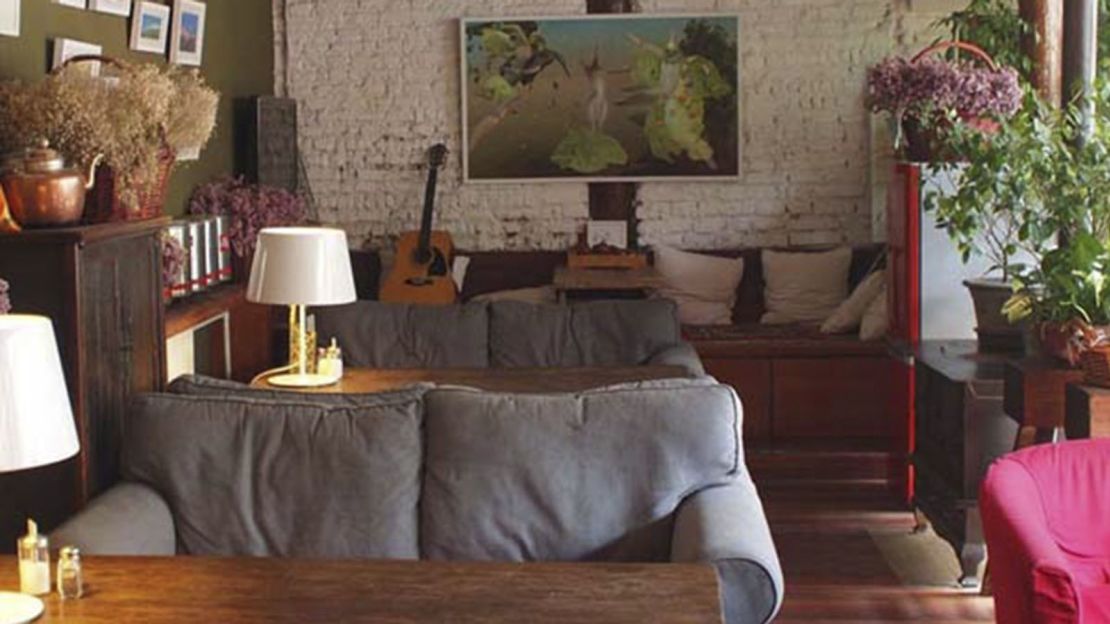
This upmarket hostel caters to the needs of today’s “flashpacker” tribe.
Housed in a handsome building in the middle of an old Beijing neighborhood, Peking Yard is all potted flowers and cozy modern furnishings with plenty of Western comforts.
If you’re wondering what to do in Beijing, fellow guests here will likely be excited to share their ideas.
With pool table, Belgian beer, pizza and burgers, the lobby bar is the place to meet other travelers and compare Great Wall adventures.
There’s a quiet garden in the back and a sun terrace with lounge chairs, a welcome sight after a day of sightseeing.
Dining
Made In China
It’s traditional Chinese food in a modern five-star setting at Made In China.
The smart-casual dining hall is filled with enticing sounds and smells from an open kitchen where diners can watch all manner of Chinese food being prepared.
Beggar’s chicken and noodle dishes are favorites among regulars, but it’s the Peking duck that has an obsessive following.
Foodies have long debated whether the duck here is better than that at Beijing’s near-undisputed best, Da Dong Roast Duck (below).
Advance notice necessary for ordering the Peking duck at Made In China.
Temple Restaurant Beijing
For many, a meal in a Ming-era temple is the exemplary Beijing luxury experience.
Diners navigate a traditional narrow alley to find the restaurant.
They walk past contemporary Chinese art installations and the towering temple hall, restored (but not renovated) so the compound retains as much of its original grandeur as possible.
The dining room was once the city’s first television factory, and its wide spaces and angular walls now hold a minimalist seating area touched with abstract art.
Menus are contemporary European with an Asian flair, with items like rice flake crusted lobster, suckling pig and gravlax salmon prepared at the table.
Desserts, from an Earl Grey tea parfait to crème fraiche cheesecake with lemongrass ice cream are impressive.
A lunch deal and weekend brunch are available.
Transit
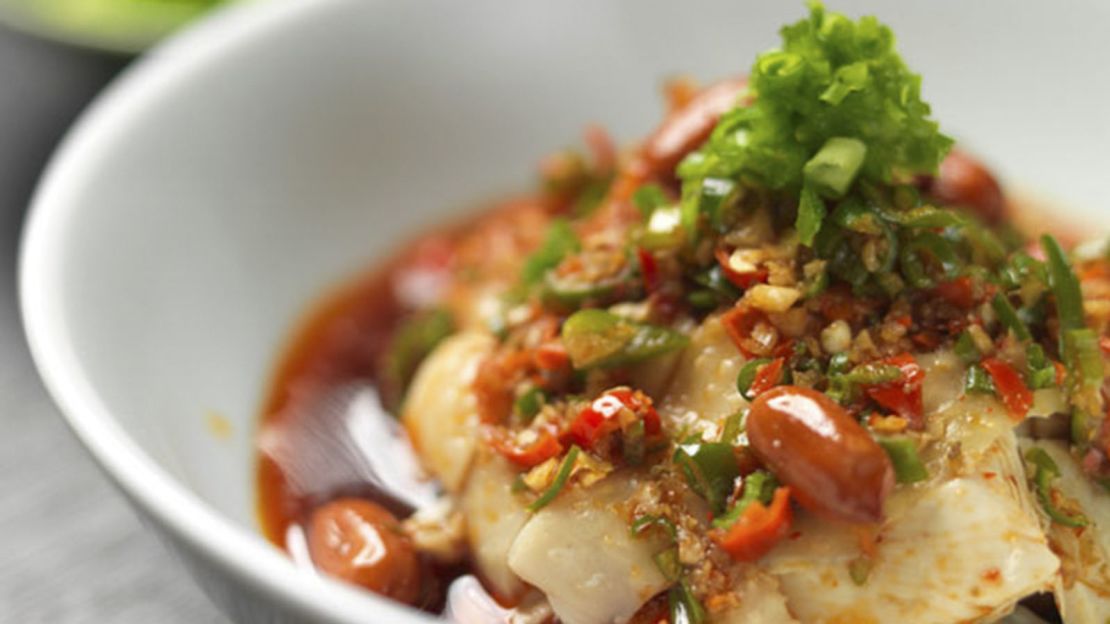
Transit offers a modern take on spicy Sichuan.
The restaurant puts an elegant touch on classic dishes, improving them with top-shelf ingredients and clever methods without tossing out any of the food’s authenticity.
Unlike other Sichuanese holes in the wall, dishes are more than chops of meat swimming in questionable oil.
Rather, excellent renditions of appetizers like chicken and prickly-numbing mapo tofu have delicately layered flavors.
Traditional dishes are cheekily enhanced, as when fatty cuts of pork are infused with cognac and pu’er tea or strips of chicken drizzled with a grapefruit vinaigrette and creamy avocado.
The high prices may be better suited for expense accounts than a casual meal, but if the old axiom that you get what you pay for is true anywhere, it’s here.
Capital M
Housed in a historic building on the centuries-old Qianmen Dajie, Capital M is somber on the outside but inviting on the inside.
The atmosphere is moneyed bohemian – inside are a Van Gogh-esque mural, fresh flowers and views of Qianmen, the Forbidden City and Tiananmen Square.
The menu is inspired by local produce, with an emphasis on modern European cooking and elements from as far as North Africa.
Classics from the original M on the Fringe restaurant in Hong Kong and Shanghai’s M on the Bund can be found here, such as crispy suckling pig, salt-encased leg of lamb and the pavlova.
Wines are taken seriously at Capital M.
Their own label has been supplied by the same South Australian vineyard for over 20 years.
Da Dong Roast Duck
The king of Peking duck, Da Dong made its name with slices of flavorful, lean-yet-succulent duck meat topped with crisp golden skin.
But you can’t eat duck every night.
What keeps Da Dong fans coming back is the high standard of all other dishes on its Bible-thick menu.
Bamboo shoots with pickles, and chestnuts stir fried with cabbage are some of the popular home-style dishes.
Banquet dishes such as sea cucumber also impress.
But Da Dong succumbs to the pitfalls of fame, with staff displaying attitude on busy nights and annoyingly hard-to-get reservations.
Avoiding overcrowded weekends is a good strategy.
Even so, for visitors planning what to do in Beijing, this one puts the “experience” in dining.
Haidilao
The best part about eating at hot pot restaurant Haidilao is waiting in the line.
Tea, fruit plates, Wi-Fi, board games and even manicures are provided for customers while they endure a wait that can stretch as long as 90 minutes.
Enthusiastic staff keep waiting diners upbeat.
The hot pot meal itself embraces a staggering choice of vegetables, meat and seafood that diners cook themselves in a bubbling pot of broth placed in the middle of the table.
Ranging from super-spicy to plain, the hot pot broth imbues layers of flavor into the fresh produce, which can then be dipped in your own custom sauce.
If you order the hand-pulled noodles you’ll get a tableside noodle dance.
Chuanban
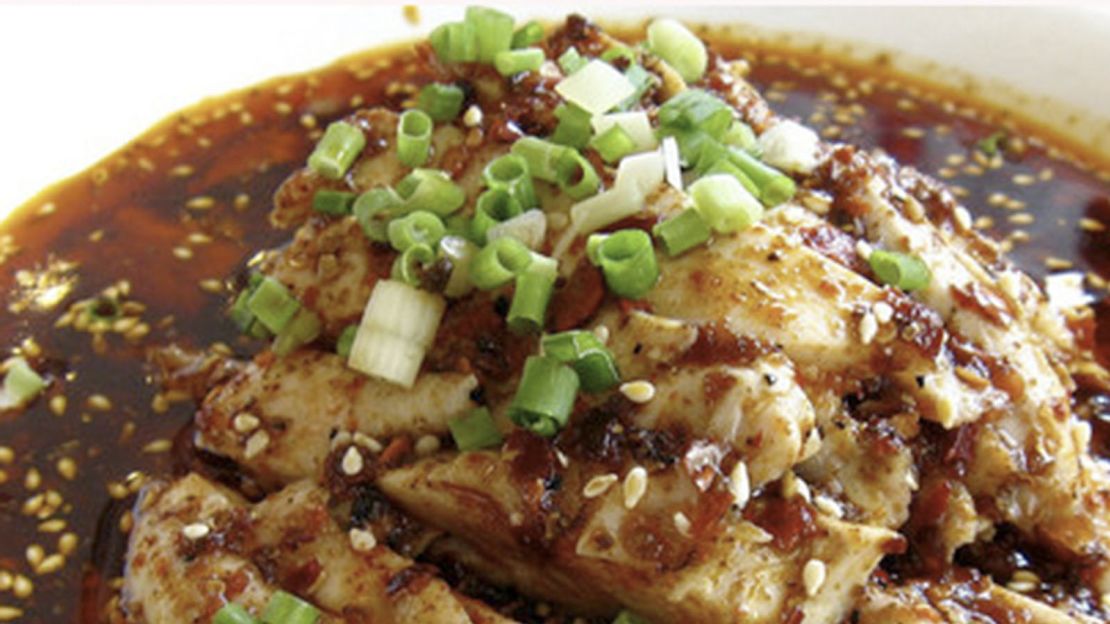
Beijingers have a thing for fiery Sichuan food and Chuanban is their favorite place to get it.
The restaurant was opened by the Sichuan Provincial Office in Beijing, so the authenticity of the food is assured.
You can challenge your spice threshold with shuiju yu, tender morsels of fish in a chili-laced broth; or mapo doufu, the famous minced pork and tofu dish.
Everything is dotted with Sichuanese peppercorns, a spice that causes a numbing sensation on the tongue.
Chuanban is a state-run restaurant, meaning it’s casual, perennially too busy and has notoriously uncaring staff. But the incredible food is worth the indignities.
Reservations not accepted. Best to arrive before 6 p.m. or after 8 p.m.
Chuanban, 5 Gongyuan Toutiao, Jianguomennei Dajie, Dongcheng District 东城区建国门内大街公园头条5号; +86 10 6512 2277 ext. 6101
Donghuamen night market

A freak show of a food market takes place near Wangfujing each night.
The Donghuamen night market consists of dozens of stalls lined up in a neat row, each selling a variety of Beijing snacks.
Sure, there’s the tame candied fruit, lamb kebabs and stuffed buns, but the other end of the spectrum is rather more challenging.
Scorpions, centipedes, starfish, cicadas and snake skin can all be fried and eaten on a stick. A bowl of stodgy gray beef offal – a Beijing favorite – will help it all go down.
More than just a meal, this one is at the top of many “what to do in Beijing” lists.
The Chinese dishes Chinese people love most
Nightlife
Apothecary
Artisanal cocktails are the thing at Apothecary, a sleek bar that gets so ridiculously crowded on weekends it has to turn people away.
Everything is homemade, from the bitters to syrups.
You can test bartenders’ skills at making an old fashioned and other classics, or challenge yourself with the bar’s original Bazillionaire, a wicked twist on the Millionaire cocktail that adds absinthe and rye to the mix.
For the munchies, it’s hard to beat the fried chicken sandwich with sweet potato fries, or the charcuterie platter.
Slow Boat Brewing Taproom
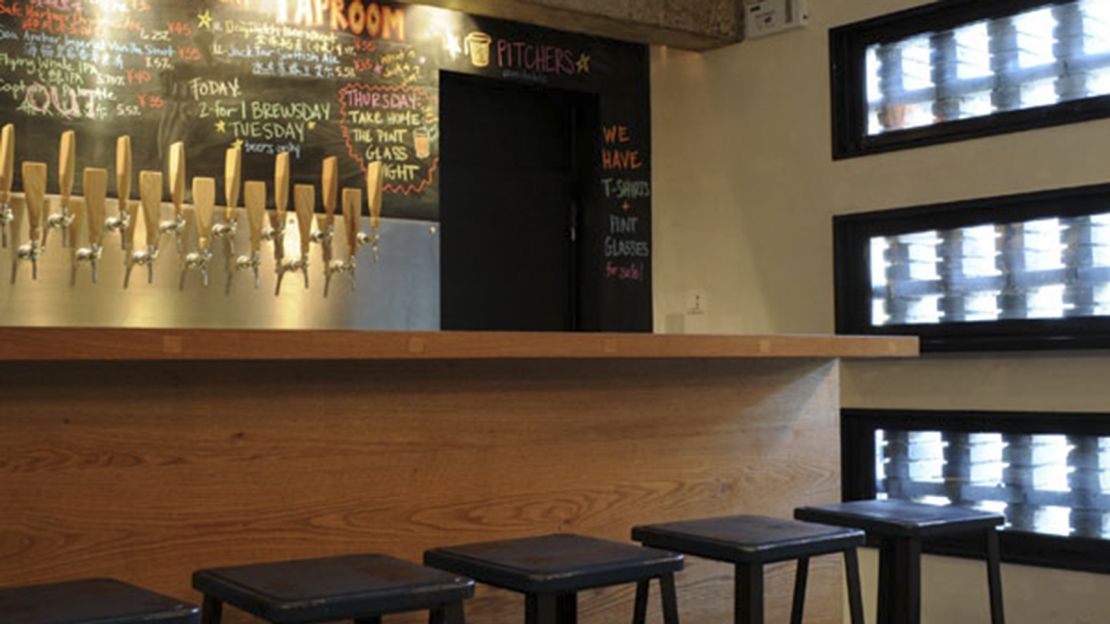
Here’s one thing: Slow Boat has the most beers on tap of any bar in Beijing. Here’s another: they brew them all themselves.
Riding the craft beer boom, the tiny taproom hidden deep among traditional alleyways was started by two Americans who missed the taste of beer back home.
This is where local beer nerds meet up over a pint, sitting at long tables in the rustic hutong atmosphere.
Brews are chalked up with their alcohol content and bitterness units, with offerings anywhere from light pale ales to dark, malty stouts. The bar regularly experiments with new styles, like a potent imperial vanilla stout or an IPA with laced with hints of mango.
Many show up just to eat. Burgers slathered with homemade hot-sauce aioli, a plate of house pickles and bratwursts cooked with IPA mustard are big sellers.
The World of Suzie Wong Club
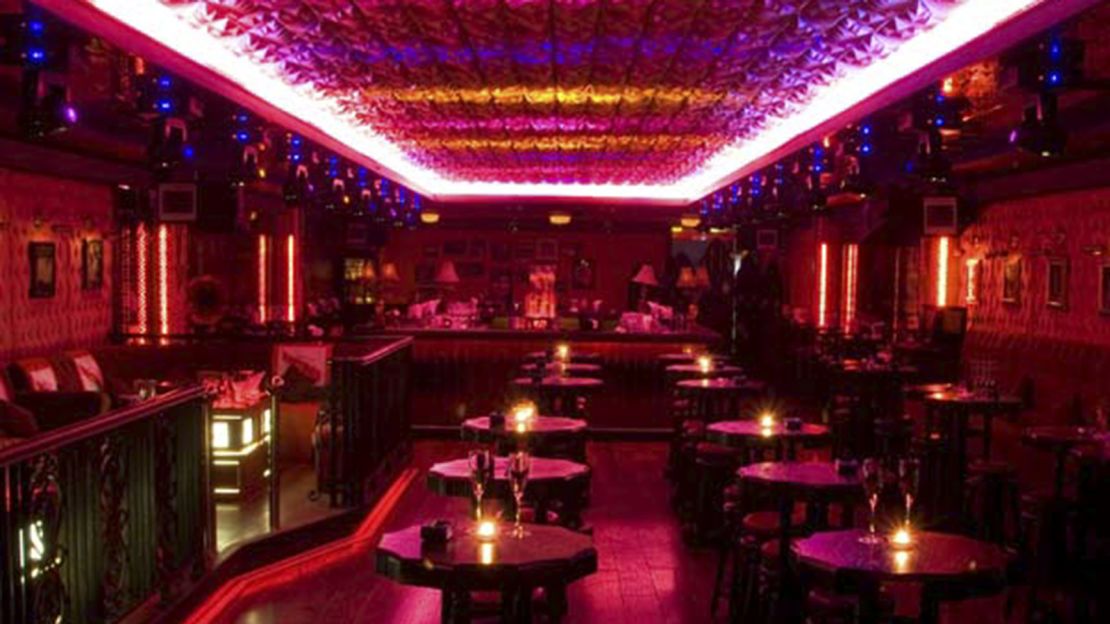
Suzie Wong is one of Beijing’s longest-running nightclubs.
Decked out like a Chinese bordello with no sense of irony, the place is all red lanterns, silk cushions and lattice screens.
There’s an electro room and an R & B and hip-hop room. The people who fill them aren’t shy about dancing. An eclectic mix of locals, expats, tourists, models and working girls fill the place almost every night of the week.
Janes and Hooch
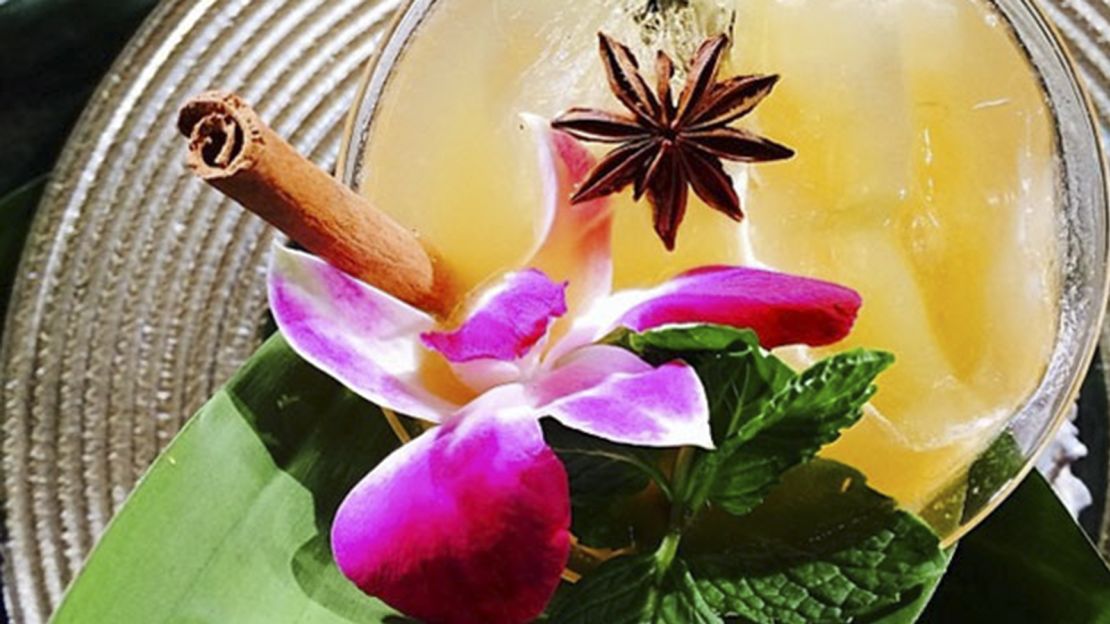
Somewhere between a vintage speakeasy and a no-rules mixologist’s playground is Janes and Hooch, a connoisseur cocktail bar that isn’t afraid to party.
Its modern twist on the saloon certainly brings in the crowds.
Bow-tied bartenders pour expertly crafted concoctions into cut-crystal stemware.
Funky jazz and house beats echo around exposed brick walls, while aged wood paneling and dangling bare light bulbs frame the scene. All the ingredients are bespoke, and the seasonal menu tips its hat to the past.
Consider the Lil’ Miss Daisy, a lightweight gin, lemon and chrysanthemum blend. Or the New Fashioned, mixed with walnut-infused dark rum and cacao bitters.
MAO Livehouse
Beijing’s best known indie concert venue, MAO Livehouse is one great sound system housed in a slapped-together old house.
The grungy black-box space hosts the most promising local indie acts, everything from Mongolian folk singing group Hanggai, to punk outfit SUBS and the experimental noise of Lonely China Day.
When international bands play, MAO is too small to hold all the fans, so be prepared to fight for space.
Shopping / Attractions
Taikoo Li Sanlitun
The place to get a feel for moneyed, trendy Beijing is Taikoo Li Sanlitun, a mecca of consumerism for the capital’s young and privileged.
The 19 low-rise glass and chrome buildings are spread over 120,000 square meters in the middle of Beijing’s nightlife zone.
It has a funky, futuristic vibe.
Here you can find Beijing’s first Apple store, dramatic flagship boutiques for the likes of Balenciaga and Versace, as well as American Apparel and Adidas.
Fashionable nearby restaurants include the Sichuanese Transit Restaurant or Modo Urban Deli and Mosto. There’s always great people watching of the slick, well-put-together variety.
Galeries Lafayette
The six floors of this ritzy department store are packed with plenty of sophisticated brands. Yet unlike the French original and its top brands, this branch is aimed at Beijing’s increasingly savvy fashionistas seeking to assert an independent style.
Foregoing a national addiction to big-name luxury brands, the store boasts trendy niche clothes, cosmetics and accessories from all over the world.
Visitors can see what China’s beautiful people are wearing up on the fourth floor, where chic cuts from local designers like Chi Zhang and Liu Qingyang line the racks.
There are restaurants, coffee shops and wine outlets on every floor, including monster pizzas at Kro’s Nest and savory pho at Le Little Saigon, as well as the French café chain Angelina.
Galeries Lafayette, 110 Xidan Beijie, Xicheng district 西城区西单北大街110号; +86 5962 9888
Panjiayuan Market
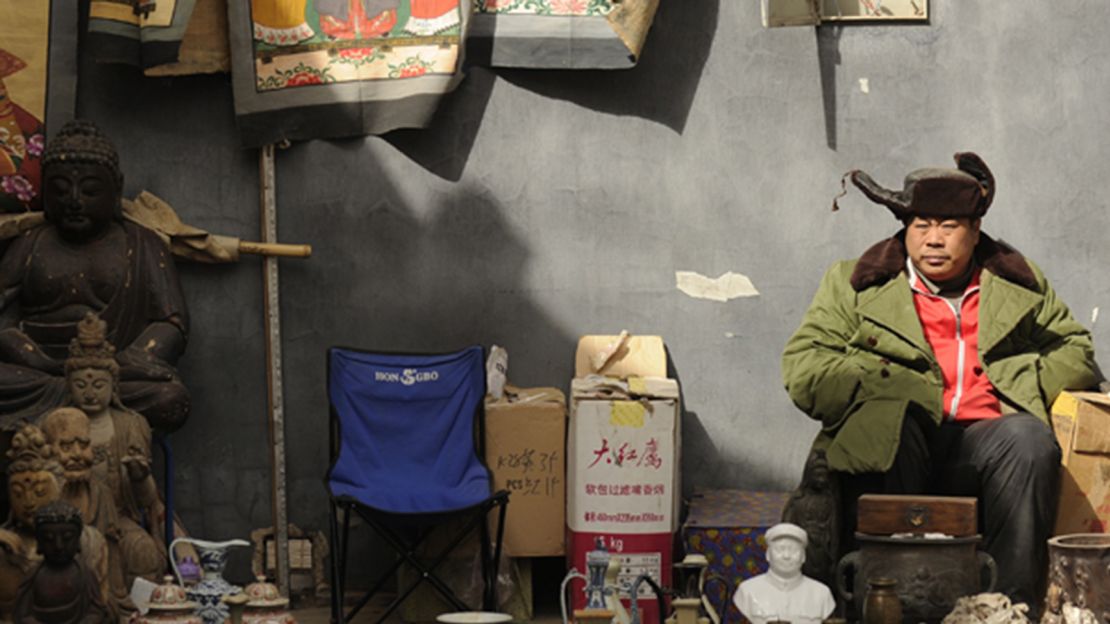
After the decline of the Qing Dynasty, disgraced nobility came here to sell their treasures.
Now, Panjiayuan is one of the biggest antique flea markets in China.
Early weekend mornings are the time to hit the market. A huge variety of wares are sold here by shrewd, eccentric merchants.
Mao memorabilia, hand-carved furniture, calligraphy, jewelry, porcelain, ceramics, knick knacks, found photos – most are fake, some are real, some are done so well that authenticity is irrelevant.
Bargaining is a sport and taken for granted. Try starting with half the asking price and move up from there.
The golden rule – whoever is most willing to walk away from the deal is the one with true bargaining power.
Nanluoguxiang
More than 700 years old, Nanluoguxiang is one of the few protected areas of the old city. It has been gentrified, with hundreds of bars, cafés and boutiques run by young, creative types.
Measuring 786 meters long but just eight meters wide, the street snakes through the neighborhood at the north end of the Forbidden City. Myriad ever-smaller laneways connect from Nanluoguxiang, leading to hidden, fun things to do and see.
You can get an imperial-style yogurt at Wenyu Nailaodian or pints at Great Leap Brewing microbrewery. Down Gulou Dongdajie at the north end of the street you’ll find Zarah Café and perfect espresso.
Kung fu hustle: How to master martial arts in China
Tiananmen Square and Forbidden City
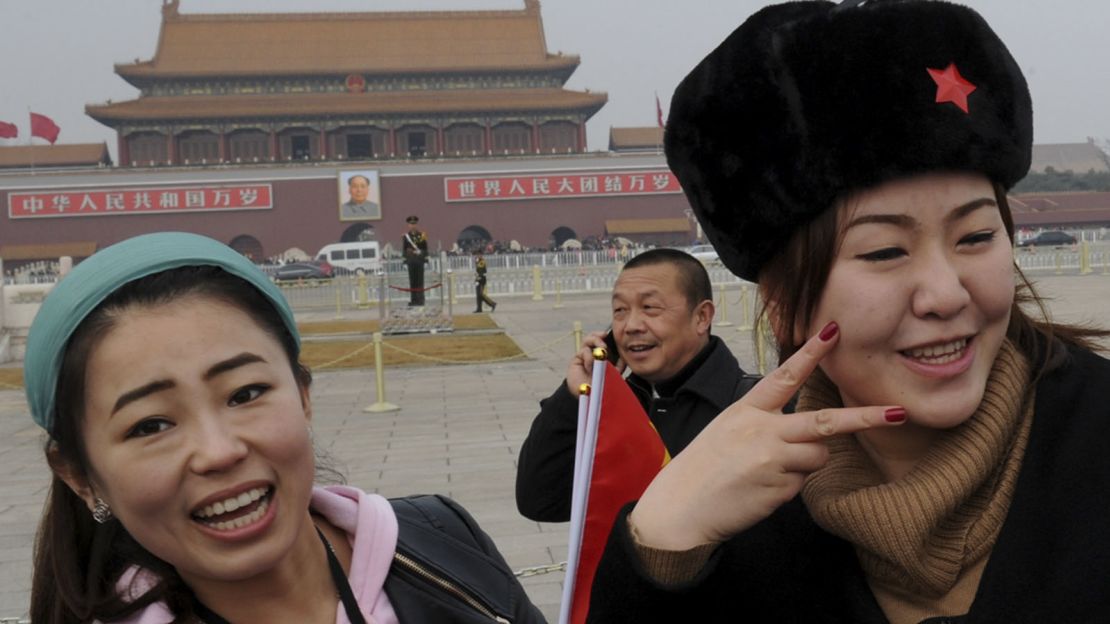
If you do only one thing on a short trip to Beijing, visit Tiananmen Square.
This is definitely what to do in Beijing. A few minutes at the square is enough for anyone to feel the combined weight of Chinese imperial and communist history.
It’s staggering.
It’s literally located at the heart of Beijing – the rest of the city fans out in concentric circles from the Forbidden City and adjacent Tiananmen Square.
Standing in the square, visitors can observe the majesty of the Forbidden City gates to the north, and the blockhouse, Soviet-inspired National Museum of China and Great Hall of the People on the east and west.
Toward the south side is Mao Zedong’s mausoleum, where visitors file through to get a look at the Great Helmsman’s embalmed body. This is the place to get that postcard perfect snapshot with the triple-whammy background of Chinese flags, giant portrait of Mao Zedong and Chinese tourists milling about making V-signs for their own cameras.
The Great Wall
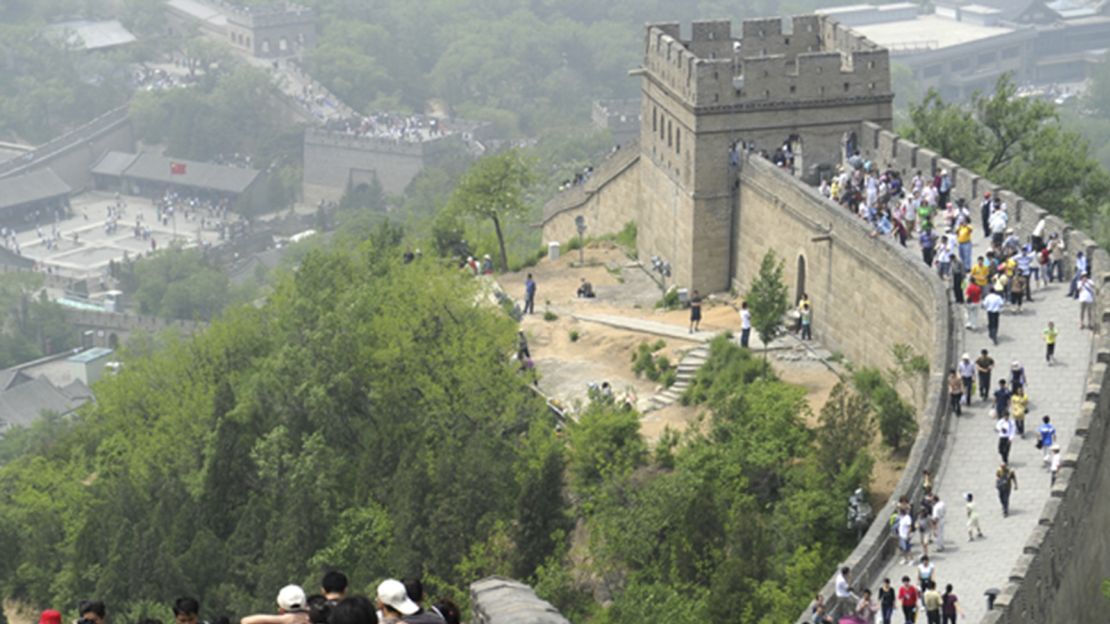
As the symbol of China, many Chinese believe that the Great Wall is “the only man-made structure on Earth that can be seen from the moon.”
This is untrue. But a visit to the wall is still mind-boggling. Like a sleeping dragon, fortifications made from little more than stone, brick, earth and wood hug the crest of mountains for thousands of kilometers across northern China.
Construction began more than 2,000 years ago on the hardly impenetrable defense system. Parts of the wall that can be accessed from Beijing today were reconstructed around 450 years ago and are well preserved.
Of the seven sections of the Wall near Beijing, Badaling is the closest and most popular. The views are great, but so are the crowds of tourists.
Mutianyu and Simatai Great Wall are further away. The latter is 100 kilometers northeast of Beijing, but there are somewhat fewer visitors, and thus a more serene atmosphere.
Huanghuacheng Great Wall is particularly stunning, with a reservoir that splits the wall and “wild” sections that have been left to crumble.
Jiankou Great Wall is the most undeniably dramatic, rising and falling along sharp, tall mountains. This section of the wall is largely unmaintained – climb at your own risk.
Temple of Heaven
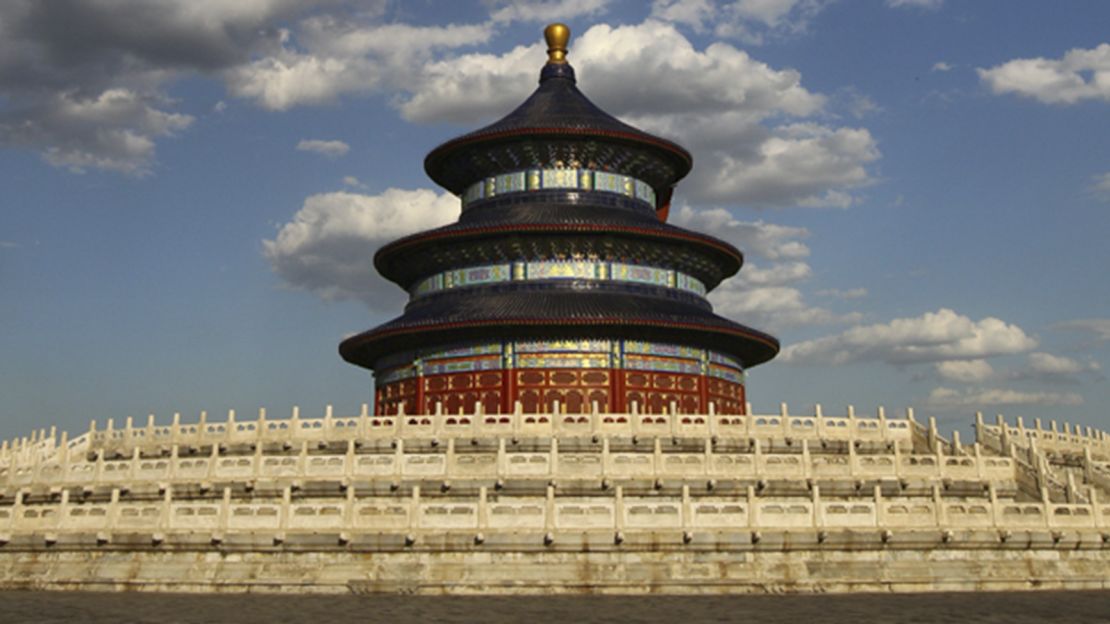
The most striking of Beijing’s temples, the Temple of Heaven is a park outing, a cultural experience and physics lesson all in one.
Built for Chinese emperors from the Ming and Qing Dynasty to worship the god of heaven and pray for harvest in spring, the temples within the grounds are iconic for their round, tiered structures resembling the crowns worn by emperors.
A perfectly smooth circular wall surrounds the Imperial Vault of Heaven.
This is the echo wall, where words whispered at one end are transmitted to a friend standing at the opposite end.
Kids can be occupied here for ages.
Four times the size of the Forbidden City, the Temple of Heaven grounds are notable for 60,000 ancient trees.
They create perfect shade for locals who come to the park to practice martial arts, fly kites and just hang out.
Summer Palace
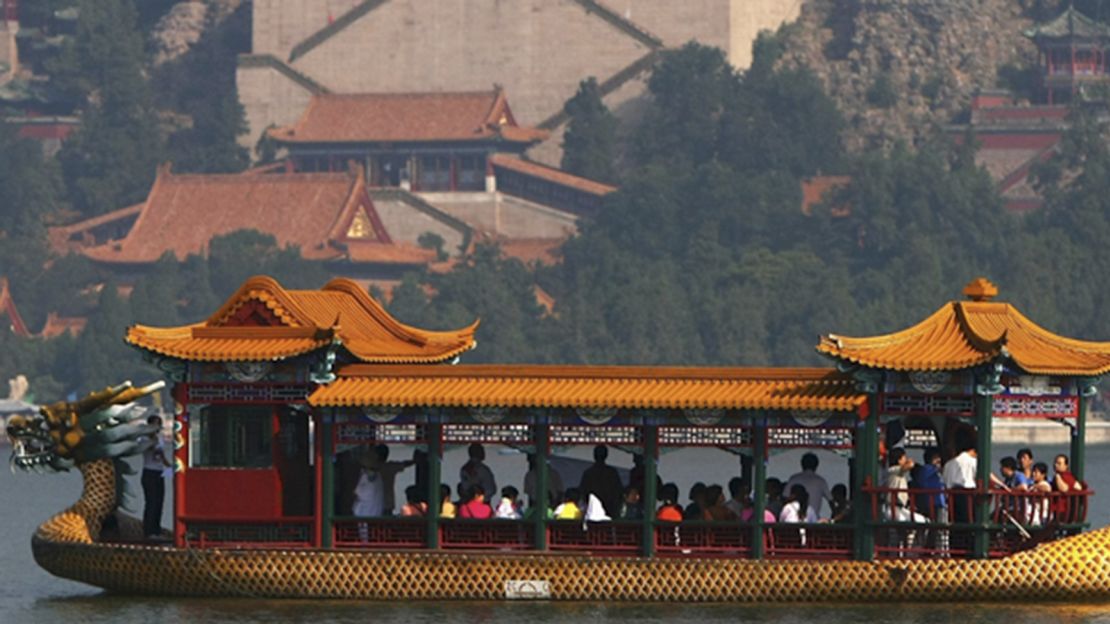
After the monumental Forbidden City and Great Wall, you might feel like you’ve seen it all and hit all the what to do in Beijing spots. But the Summer Palace can shock the senses of even jaded tourists. This summer playground for emperors and empresses is another triumph of imperial will.
The man-made Kunming Lake was modeled after Hangzhou’s West Lake and stretches 2.2 square kilometers, dominating the grounds. Longevity Hill, about 60 meters high, is the other landmark.
In a random variety of Chinese and Western styles, a plethora of structures built purely for the enjoyment and distraction of imperial minds dot the Summer Palace.
A giant marble boat, for example, sits permanently on the shores of the lake, and the 728-meter Long Corridor is decorated with more than 14,000 paintings.
You’ll need a day to fully enjoy all the horticultural and architectural offerings and imperial extravagance that the Summer Palace packs in.
798 Art Zone
A former complex of 1950s factory buildings has been taken over by artists, galleries and cafés to form the 798 Art Zone.
Much of the industrial space has been left untouched, including Mao-era propaganda slogans painted on the walls, rusting machines and exposed pipes.
The cavernous industrial spaces are a great backdrop for contemporary Chinese paintings, sculptures and installations, as well as flocks of hipsters, eccentrics and blog-baiters (people who hope to be featured on blogs) that flood though.
Even if contemporary art bores you, 798 has plenty of attractions.
The increasingly trendy neighborhood has atmospheric eateries throughout, such as Sichuan restaurant Tian Xia Yan. The Grace Beijing is a quirky-elegant hotel. Leng Yan tattoo studio is arguably Beijing’s finest, if you’re interested in taking away a permanent Chinese ink painting.



